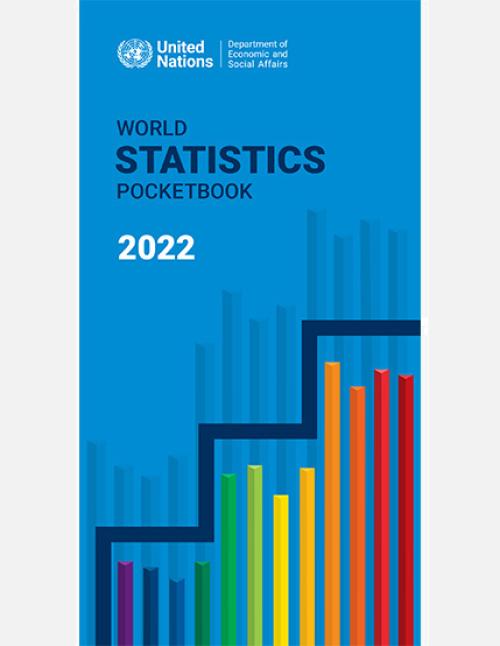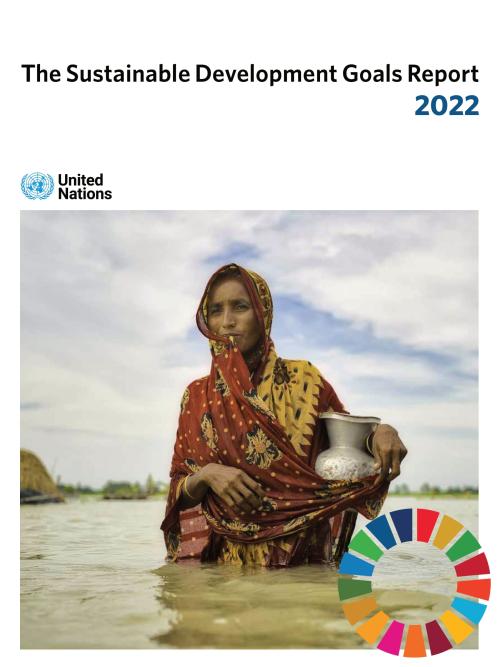
Les enquêtes auprès des ménages sont largement utilisées en tant qu’outils destinés à produire de l’information sur les conditions socio-économiques et le bien-être des ménages. Mais la précision des estimations obtenues à partir de ces enquêtes diminue de manière significative quand on cherche à les produire sur des groupes de population qui sont des sous-ensembles que le plan de sondage de l’enquête n’a pas pris en compte a priori. Dans ce contexte, il est possible d’utiliser des procédures d’estimation combinant l’information de l’enquête avec de l’information auxiliaire disponible pour la population, par exemple issue de recensements ou de fichiers administratifs. Ce document…

Contraception assists individuals and couples to achieve their reproductive goals and enables them to exercise the right to have children by choice. World Family Planning 2022 presents the latest trends and patterns in contraceptive use at the global, regional and national levels. The report assesses levels and trends in contraceptive use and needs of women of reproductive age between 1990 and 2021, including the proportion of women of reproductive age (aged 15-49 years) who have their need for family planning satisfied with modern methods of contraception (SDG indicator 3.7.1). The report also examines how contraceptive use and needs vary by women’s age and highlights gaps in meeting…

Demographic Yearbook 2021 is the the 72nd issue in a series published since 1948. Through the cooperation with the National Statistical Offices, official demographic statistics are compiled in the Yearbook, as available, for more than 230 countries and areas of the world up to the reference year 2021. This edition of the Yearbook contains chapters on the population size and distribution, the population of capital cities, fertility, foetal mortality, infant and maternal mortality, general mortality, nuptiality and divorce.

The present Handbook on Civil Registration, Vital Statistics and Identity Management Systems: Communication for Development provides guidance and assistance to countries to help them to strategically design and carry out evidence-based and measurable communication for development activities in support of a comprehensive improvement programme of civil registration, vital statistics and identity management systems. It is the first revision of the Handbook on Civil Registration and Vital Statistics Systems: Developing Information, Education and Communication, issued in 1998.

The Handbook on Management and Organization of National Statistical Systems, the 4th edition of a series of publications on the management of statistical organizations, was endorsed by the 52nd session of the UNSC in March 2021 as a non-prescriptive compendium targeting chief statisticians, senior managers, and staff members of statistical organizations. The Handbook provides guidance on how to develop and maintain national statistical capacity that is fit for purpose and apprises critical issues and topics, including the integration of innovative data sources and technologies in the production of statistics and indicators. To remain relevant in a rapidly changing data ecosystem, the…
The United Nations E-Government Survey 2022 is the 12th edition of the United Nations’ assessment of the digital government landscape across all 193 Member States. The E-Government Survey is informed by over two decades of longitudinal research, with a ranking of countries based on the United Nations E-Government Development Index (EGDI), a combination of primary data (collected and owned by the United Nations Department of Economic and Social Affairs) and secondary data from other UN agencies.
This edition of the Survey includes data analysis in global and regional contexts, a study of local e-government development based on the United Nations Local Online Service Index (LOSI),…

The Statistical Yearbook provides in a single volume a comprehensive compilation of internationally available statistics on social and economic conditions and activities, at world, regional and national levels, for an appropriate historical period. It is prepared by the Statistics Division, Department of Economic and Social Affairs, of the United Nations Secretariat.

The World Statistics Pocketbook, 2022 edition is the forty-sixth in a series of annual compilations of key statistical indicators prepared by the United Nations Statistics Division of the Department of Economic and Social Affairs. Over 50 indicators have been collected from more than 20 international statistical sources and are presented in one-page profiles for 30 world geographical regions and 232 countries or areas. The Pocketbook is organized into 5 sections; general information, economic indicators, major trading partners, social indicators, and environmental and infrastructure indicators. This issue presents data for the economic, social, environmental and infrastructure sections…

This publication is issued in two volumes which offer a comprehensive view of the topic. Volume I: Trade by Country, compiled in May of each year, presents detailed data on imports and exports by commodity and trading partner. Volume II: trade by Commodity contains the detailed tables showing international trade for a variety of commodities and world trade tables covering trade values and indices. The presented data, charts and analyses will benefit policymakers, government agencies, the business and finance sectors, non-government organizations, civil society organizations, journalists, academics, researchers, students and anyone who is interested in trade issues.

The Sustainable Development Goals Report 2022 provides a global overview of progress on the implementation of the 2030 Agenda for Sustainable Development, using the latest available data and estimates. It tracks the global and regional progress towards the 17 Goals with in-depth analyses of selected indicators for each Goal.
According to the Report, cascading and interlinked crises are putting the 2030 Agenda for Sustainable Development in grave danger, along with humanity’s very own survival. The Report highlights the severity and magnitude of the challenges before us. The confluence of crises, dominated by COVID-19, climate change, and conflicts, are creating spin-off impacts on…

World Population Prospects 2022 is the twenty-seventh edition of the official United Nations population estimates and projections. It presents population estimates from 1950 to the present for 237 countries or areas, underpinned by analyses of historical demographic trends. This latest assessment considers the results of 1,758 national population censuses conducted between 1950 and 2022, as well as information from vital registration systems and from 2,890 nationally representative sample surveys.
The 2022 revision also presents population projections to the year 2100 that reflect a range of plausible outcomes at the global, regional and national levels. For the first time,…

Global growth prospects have weakened significantly amid the war in Ukraine, rising energy, food and commodity prices, soaring inflation and tightening monetary policy stances by major central banks. The world economy is projected to grow by 3.1 per cent in 2022, marking a downward revision of 0.9 percentage points from our previous forecast released in January 2022. The baseline forecast faces significant downside risks from further intensification of the war in Ukraine and potential new waves of the pandemic.
Growth forecasts for the United States, European Union and China have been revised downward, with the European Union registering the most significant downward revision. The…
 Welcome to the United Nations
Welcome to the United Nations